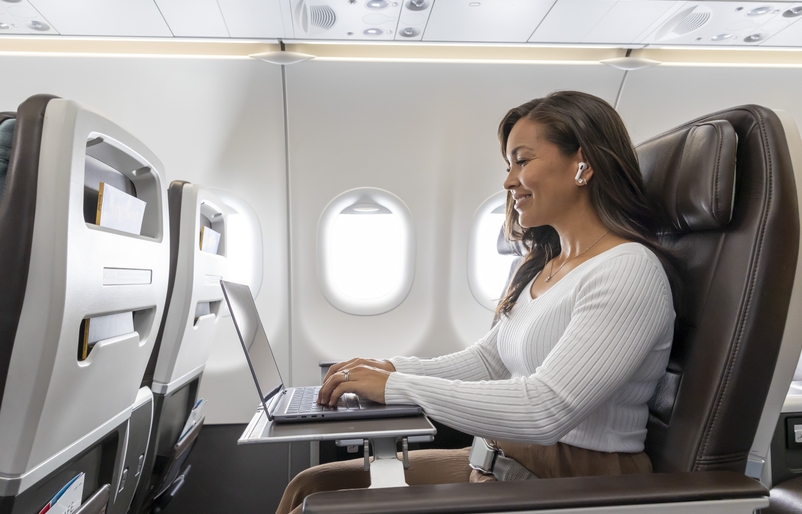
Hawaiian Airlines has taken a significant step by becoming the world’s first major airline to offer Starlink’s high-speed, low-latency broadband internet on a commercial flight. The service commenced on a flight from Honolulu to Long Beach aboard one of its Airbus A321neo aircraft, marking the beginning of a rollout on selected A321neo planes over the coming months. This new in-flight Wi-Fi service, provided free of charge to passengers, is designed to offer seamless connectivity from the moment they board the aircraft, without the need for cumbersome registration or payment.
Chris Liebertz, the senior director of engineering at Hawaiian Airlines, expressed immense pride in combining Starlink’s top-tier technology with Hawaiian’s renowned hospitality. “In marrying this best-in-class technology with our authentic Hawaiian hospitality, we are offering our guests a travel experience unlike any other airline flying to and from the Hawaiian Islands,” Liebertz said.
The initiative is part of Hawaiian’s endeavor to enhance the in-flight experience, allowing passengers to stream, game, and enjoy connected services similar to what they would at home, even while flying over the Pacific Ocean. This advancement is facilitated by a Starlink-designed aviation terminal installed on Hawaiian’s aircraft, enabling them to receive robust internet signals from satellites while seamlessly transitioning connections across the vast oceanic expanse.
Will Seidel, director of Starlink engineering at SpaceX, outlined the technical capabilities of the system. “Starlink’s self-designed aviation terminal installed on Hawaiian’s aircraft allows each plane to receive strong, fast internet signals from the satellites orbiting above Earth,” Seidel explained. He further described how the system would ensure uninterrupted service by seamlessly switching satellite connections as the aircraft traverses the Pacific.
To attain this high level of performance, Hawaiian and Starlink carried out a series of tests, including live flights, to evaluate connectivity under various conditions and refine the user experience. “During these tests, employees streamed shows and movies, played video games with friends, downloaded and uploaded large files, worked in real time, and scrolled on social media,” Liebertz detailed, emphasizing the comprehensive nature of these assessments.
The rigorous process also involved collaboration with the Federal Aviation Administration (FAA) to ensure the system’s safety and compliance. Seidel highlighted the rigorous testing and certification process, culminating in FAA approval for the use of Starlink across Hawaiian’s A321neo fleet and potentially other models.
As Hawaiian Airlines rolls out this technology across its long-haul fleet, the service will gradually become available to more passengers, starting with the 18 A321neo aircraft before expanding to A330s and eventually the new Boeing 787-9 flagship aircraft. This phased introduction aims to enhance the in-flight experience fleet-wide, as indicated by the inclusion of a Starlink decal on equipped aircraft.
For team members like Liebertz, who has been involved with the project since its announcement in April 2022, the launch represents a significant achievement. “Today marks a huge milestone not just for my team but for both companies. It has been an incredible journey working with the Starlink team to get our A321neos equipped with this exceptional service,” Liebertz reflected, expressing eagerness to personally experience the transformative impact of this technology on aviation.










